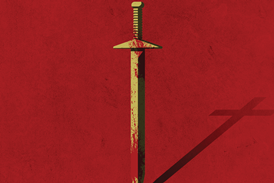To celebrate the 75th anniversary of Stuart Hine’s classic hymn, Matt Redman has recorded a new, star-studded version of ‘How great thou art’ to raise money for Ukraine, the country that inspired it

When we sing a worship song in church, someone, somewhere is usually being paid. It’s the awkward side of the worship music business that Christians don’t often like to talk about. Except, in the case of ‘How great thou art (until that day)’, every time we sing it, we’re funding Bible translation, or aid to the Ukrainian Church.
2024 marks the 75th anniversary of ‘How great thou art’. In celebration, the Stuart Hine Trust, which owns the rights to the song, commissioned a new version. Written by Matt Redman and Mitch Wong, it features some of the world’s biggest Christian artists including Kari Jobe, Brian and Jenn Johnson, Chris Tomlin and Pat Barrett. What’s more, none of the artists received a fee for taking part, meaning that every penny raised goes straight to charitable causes.
As the war in Ukraine – a land crucial to the hymn’s genesis - enters it’s third year, the song’s timing is especially poignant. “In the lyrics, we wanted to acknowledge the ‘broken, warring world’ we live in, but also to sing with hope and faith over that,” said Redman in a statement. “Worship isn’t meant to have an escapist mentality, where we ignore what’s going on around us in this fragile, fallen world. Instead, we can engage with these things, pray for, and acknowledge God’s ultimate kingdom rule and reign in the midst of them.”
A short history
While the version of the hymn that is best known and loved in the UK was written in 1949, it is based on a Swedish poem ’O store gud’, written 64 years earlier by Carl Boberg. One evening, the poet, preacher and MP was looking out of his bedroom window at a rainbow over the sea and was inspired to write a poem in praise of God. Published in 1886, within five years it had been matched with a Swedish folk tune and at least eight of its nine verses published in two songbooks.
In 1907, a German translation was published, leading to a Russian translation five years later. That version was published in America in 1922 and an English translation followed in 1925, but neither caught on straight away.
Ukrainian inspiration
The song took off when British missionary, Stuart Hine, translated it and added his own words. He had learned the Russian version in the early 1920s in Ukraine’s Carpathian Mountains. When a thunderstorm stopped the evening’s preaching and any chance of travelling that night, wandering through the mountains’ woods and forest glades led to the second verse.
When visiting a village, Hine would ask if there were any Christians there. In one case, there was just one couple – Dmitri and his wife Lyudmila, who had taught herself to read using a bible left behind by a Russian soldier. As Hine approached the house, he heard Lyudmila reading from John’s Gospel, and the loud responses of her listeners as they expressed their wonder at God’s grace and mercy in dying for their sins. Hine wrote down some of what he heard, which became the third verse (“And when I think, that God his Son not sparing, sent him to die…”)
The fourth verse came after he had returned to England and was evangelising among displaced Russians after the second world war. One man was separated from his wife. He was desperate to see her again and share their faith together, but expected this would now be after death (“When Christ shall come with final acclamation to take me home…”)
Around the world
The next year, Hine published his version and fellow missionaries helped it spread across the world.
The most well-known of these, Rev Dr Billy Graham, used it as a signature tune in his 1950s campaigns, including the 1954 Haringey Crusade, which transformed the British Church, and his 1957 mission at Madison Square Gardens, which introduced the hymn to an estimated 96 million viewers.
Graham told his choir director to “use it as often as possible,” because: “it turned a Christian’s eyes toward God, rather than upon himself, as so many songs do.” That comment still holds true.
In its native Sweden, the song never really took off until Elvis Presley recorded a version as the title track to the album that won him his first Grammy.
Back to the start
Redman used the same studio as Elvis to record his version, commissioned by the Stuart Hine Trust with Ukraine and the ongoing conflict in mind:
”Until that day when heaven bids us welcome / And as we walk this broken warring world / Your kingdom come / Deliver us from evil / And we’ll proclaim our God how great You are! / With hope we’ll sing our God how great You are!”
There have been over 1,700 versions of ‘How great thou art’ recorded and the song has been used in several major films and television programs. This new version will continue that tradition, but also support humanitarian work and Bible translation in war-torn Ukraine, whose nature and people originally inspired Hine’s words all those years ago.





































No comments yet